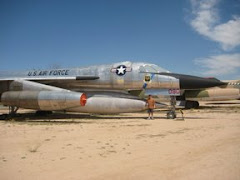As I have mentioned before, Ephrata, Washington was home to the Ephrata Army Air Field. Numerous aircraft types were stationed there during World War II. I have already written about a couple B-17s from there. Ephrata was also home to a few fighter training squadrons. Many P-38s and P-39s flew from there.
On the morning of August 5, 1944, a flight of five P-39s, Flight 16, took off for some elementary formation flying. About thirty-three minutes of flight, the formation was at 7500 feet and the flight leader began a turn. F/O Robert Parcher*, in ship #55, was on the lead's left wing. On his wing were two other ships. On the lead's right was only one ship. As the flight began a left turn, F/O Parcher's P-39 slid across the formation to the right. The lead was informed of the odd behavior and they followed the turn around until they could reacquire the wayward aircraft. As they came back around they observed a splash in the nearby Columbia River, but no other sign of the missing aircraft.


#42-4440 had only 428 hours on it. It's engine only had 98 hours on it. The ship, itself, had been through it's last 50 hour inspection on July 30. The only problem experience had to do with the magnetos. On the left magneto the engine cut out, on the right mgneto only the engine lost 300 r.p.m. After the maintenance, it was released for flight. The conditions on August 5th were Ceiling and Visibilty Unlimited, or CAVU.

The formation flew over the growng oil slick then headed back to base. The site was later dragged and some parts were recovered, though not enough to give a definite cause of the accident. F/O Parcher's body was recovered.

The formation flew over the growng oil slick then headed back to base. The site was later dragged and some parts were recovered, though not enough to give a definite cause of the accident. F/O Parcher's body was recovered.
The location is written as 10 North West of Peach, Washington. It is not obvios where that place is, but the report also listed some vague coordinates. From those, it indicates the sight is near the Columbia river.

The cause was undetermined, though, it is likely all of us have suspicions. One might suspect engine failure. Others might suspect some sort of control malfunction. Still others might suspect the helth of the pilot. Still, there appears to be no evidence of any over others. The best evidence appears to favor an engine failure, but why was there no apparent attempt to leave the aircraft if the pilot was unable to start the engine again? The other members of the flight said there was no sign of smoke. He simply broke formation and made a shallow dive until the airplne struck the river.
* Note: F/O appears to be the Royal Air Force rank of Flying Officer. This is just a guess, and any clarification anyone might be able to add would be greatly appreciated.







No comments:
Post a Comment